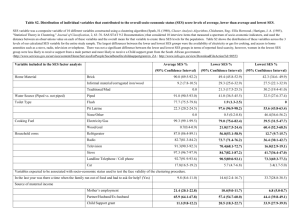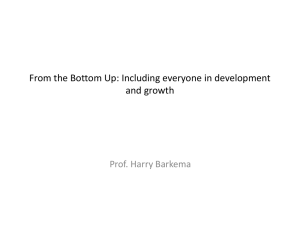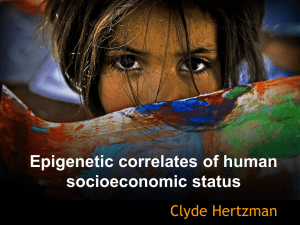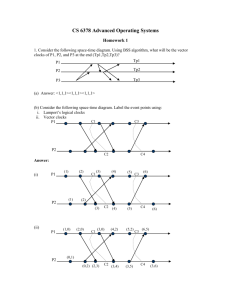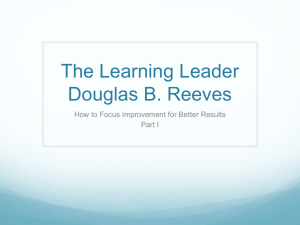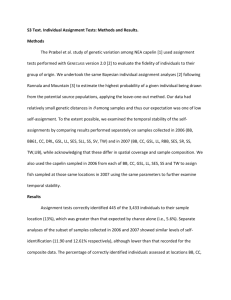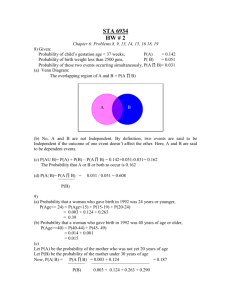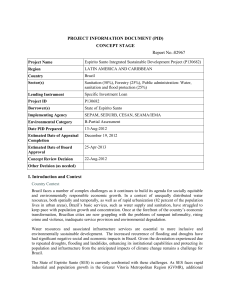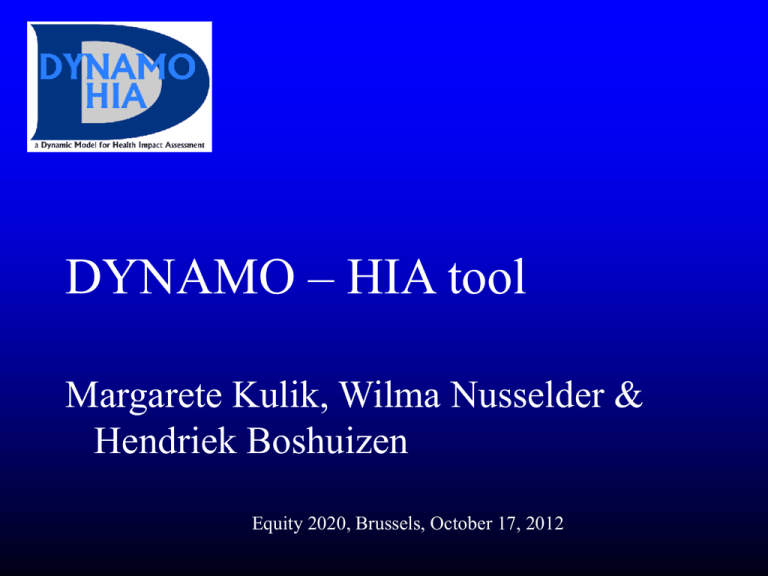
DYNAMO – HIA tool
Margarete Kulik, Wilma Nusselder &
Hendriek Boshuizen
Equity 2020, Brussels, October 17, 2012
DYNAMO-HIA tool…
•
…Is a ready-to-use tool to project the effects of changes in
risk factor exposure due to policy measure or intervention on
disease-specific and summary measures of population health
•
Organizes and stores necessary input data
•
Synthesizes according to standard causal epidemiological
pathway
•
Projects how changes in risk factor distribution affect diseasespecific and summary measures of population health
Scope of DYNAMO-HIA tool
Reference scenario
Description of “business as usual” situation:
demographic, epidemiological and risk factor exposure
Intervention scenario
Changed risk factor exposure:
changed prevalence and/or changed risk factor transition rates
DYNAMO-HIA
Estimation of change in large set of health outcomes:
comparison of reference and intervention scenario
DYNAMO-HIA tool: one risk factor
but can be combination of risk factors
Risk factor exposure:
- Categories: never, current, former smokers
- Continuous: mean BMI
- Compound: former smokers by time since quitting
Partitioning population along risk factors:
- BMI*smoking
- SES*smoking
Large set of output measures
• Future risk factor prevalence by age, sex and year
• Future disease prevalence by age, sex and year
• Future mortality/survival by age, sex and year
• Structure of population by age, sex, diseased vs. non-diseased
• Summary measures of population health
- Life expectancy
- Life expectancy with(out) diseases
- Disability-adjusted Life expectancy
cohort and population
Wrapping up: DYNAMO-HIA current situation
Dynamo-HIA is generic tool that:
• simulates a real life population trough time (=dynamic)
• models explicit risk factor states
• has modest data requirements: uses population-level data
• provides large set of outcome measures
• is generally accessible: publicly available + no programming skills
• includes database with data for large number of EU countries on:
– 3 risk factors: smoking, overweight, alcohol
– nine diseases: IHD, stroke, diabetes, COPD, 5 cancers
– demographic situation
Special needs of Equity 2020 project
•
Splitting up population by SES groups
•
Regional analyses
Different options
Two issues:
•
Data needs
•
Presentation of output
SES groups
Option 1: Each SES group as a separate population
Data: all data, including mortality + IPM data of diseases by age, sex and SES
->huge challenge!
Output: separate output for each SES*sex group -> user should make own
figures and tables to have overview of disparities
Option 2: partitioning population along combination risk factor * SES
Data: Prevalence and RR by SES*risk factor (SES-low*non-smoker, etc)
Output: Disease information by SES*risk factor, but not LE, mortality, etc!
Regions
Option 1: Each region as a separate population
Data: all data, including IPM data of diseases by age, sex and region->huge challenge!
Output: separate output for each region*sex group -> user should make own figures
and tables to have overview of disparities
Option 1b: Each region as a separate population, but use local risk factor data
and national disease data
Data: Demographics, prevalence RF by region, rest national
Output: separate output for each region*sex -> user should make own figures and
tables to have overview of disparities
Wrapping up: DYNAMO-HIA Equity 2020
Data needs > available data
•
Some tricks are possible, but even at national level input data could not be
estimated for all MS!
Output: not designed for disparities (in addition to sex)
•
Each sub-population as population (option 1): post-processing is needed
•
Partitioning risk factors (option 2): important output not available by SES
• This can be adapted in DYNAMO-HIA with additional funding
•
DYNAMO-HIA for HLY without diseases (expected mid 2013) will avoid need for
IPM data in this particular case
Funding
• Project was funded by the Executive Agency for Health and
Consumers (EAHC)
• Was part of the EU Public Health Program 2003-2008 of the
European Commission's Directorate General for Health and
Consumer Affairs (DG SANCO)
• Co-financing received from the Erasmus Medical Center
Rotterdam, the Institute of Public Health and the Environment
in the Netherlands, the Catalan Institute of Oncology, the
International Obesity task force, the London School for
Hygiene and Tropical Medicine, the Haughton Institute in
Dublin, and the Instituto Tumori in Milan.
THANK YOU FOR YOUR
ATTENTION
Example output for smoking
Example output for smoking
Tool can be downloaded
• www.dynamo-hia.eu
• Tool
• User guide
• Macros



